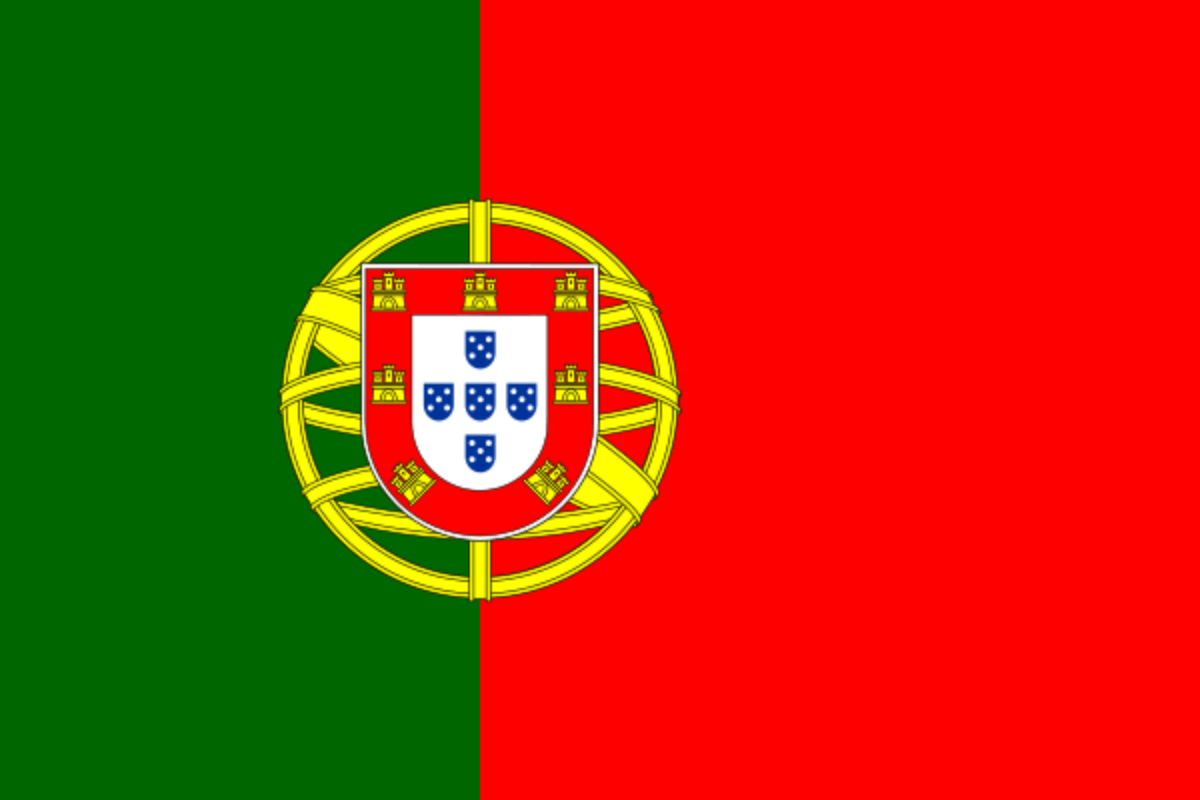The national animal of Portugal is the Iberian wolf. This is a subspecies of grey wolf native to the Iberian Peninsula, and as a group they have been isolated from other wolf species for more than a century. They are of great symbolic significance to the people of Portugal.
Iberian wolves are fascinating in many ways as an example of an isolated population of a wider species.
They exhibit a great many distinguishing features and, sadly, are currently listed as a vulnerable species.
There are many things to learn about these wolves and the role they play in the symbolism of Portugal, so let’s get started.

What is the national animal of Portugal?
The national animal of Portugal is the Iberian wolf.
This is a subspecies of grey wolf which is found in the Iberian Peninsula, which is a region comprising parts of Portugal and north-western Spain.
This area is home to around 2,500 wolves which, since around the early 20th Century, have been isolated from other populations of grey wolf.
That said, even at this time the Iberian wolf was recognized as a distinct subspecies of the grey wolf.
It was first classified, formally, in 1907, and at that time there was even said to be another distinct subspecies called the Spanish wolf.
These wolves differ in a number of ways from other populations of grey wolf.
The most pronounced of these differences are morphological in things like the color of the coat and the shape of the skull, but they are also seen in their mtDNA and the microsatellites of the species.
They have a dark brown-reddish coat and they have a pale stroke on their cheeks.
They have a slighter frame than most other European wolves, as well as white marks on their upper lips and dark marks on the tails.
Populations of wolves generally declined massively during the 18th and 19th Centuries.
Concerted persecution efforts by humans sought to drive them to extinction, as, among other things, they were a common problem for livestock.
Populations had declined to their lowest point by around the 1960s, after which time they have continued, slowly, to grow again.
Iberian wolves represent around 2000 individuals in more than 350 packs, over an area of 140,000 kilometres squared.
Density is sometimes as high as seven wolves per 100 kilometres squared—among the highest density in Europe.
They are, then, an important symbol to the people of Portugal—but why?
Why is the Iberian wolf the national animal of Portugal?
The Iberian wolf is the national animal of Portugal for a variety of reasons.
Wolves in general have held symbolic significance to human cultures in just about every part of the world where they can be found.
They are seen as images of strength, unity, and courage, working as they do in packs to bring down their prey.
They also have complex social structures which are seen as reflections of human societies.
On a symbolic level, then, the Iberian wolf represents everything that wolves in general represent, like strength and unity, as well as the specific landscape of Portugal’s Iberian region.
This, then, is the other important point.
The Iberian wolf is also seen as a representation of the natural beauty of Portugal, on a more literal level.
The Iberian region is in many ways representative of Portugal’s more general natural beauty, and the Iberian wolf is seen as representative of the beauty of the Iberian region.
The wolf, then, is both a literal and symbolic image in Portugal.
On the other hand, though, there is the question of conservation.
Though populations have steadily grown in recent decades, they remain a vulnerable species—by making them the national animal, awareness can be brought to this issue.
Are Iberian wolves endangered?
Iberian wolves are listed by the IUCN Red List as vulnerable, which is one step up from endangered.
So, in more general nomenclature, it would not be entirely wrong to say that they are endangered.
They are in a precarious position and could be at risk of going extinct in the coming decades if extreme measures are not taken to ensure their survival.
But as far as their official classification goes, they are not currently endangered in the strictest sense.
Either way, though, they are again at risk of becoming endangered.
What do Iberian wolves eat?
Wolves are pack hunters and work in large groups to bring down their prey.
They eat a variety of small prey and larger ungulates, though, and are most commonly known to hunt wild boar—to the extent that they even keep the population of wild boar stable.
They also eat things like rabbits, roe and red deer, ibex, sometimes small carnivores and even fish.
In other words, then, they will eat whatever they can get their hands on depending on the circumstances of a particular population.
Larger prey will keep them fed for longer but tend to be more difficult to successfully hunt.
Iberian wolves are in a somewhat precarious position, then.
They are a vulnerable species and measures will need to be taken to ensure their continued survival.
Their loss would be an immense blow to the people of Portugal who see the species as a massively important symbolic and cultural motif for such a variety of reasons.
Without them, the ecological landscape in this part of the world would look quite different and be poorer for it.

